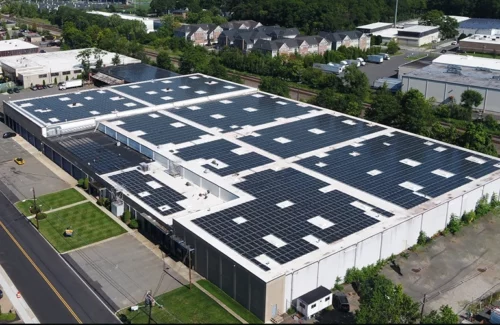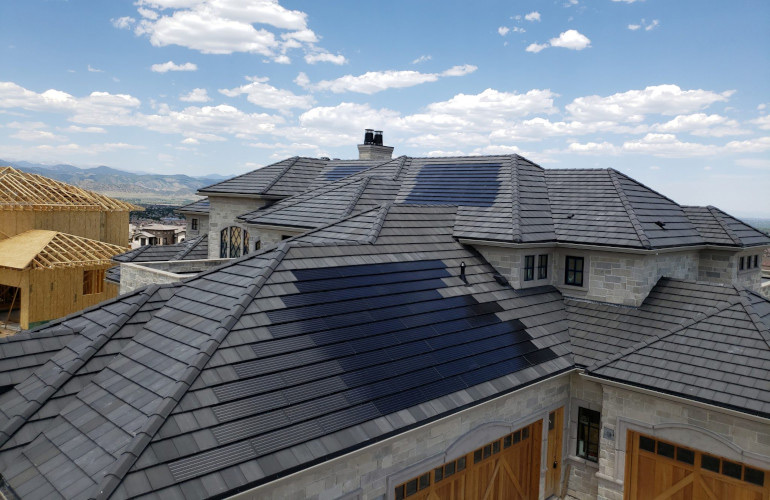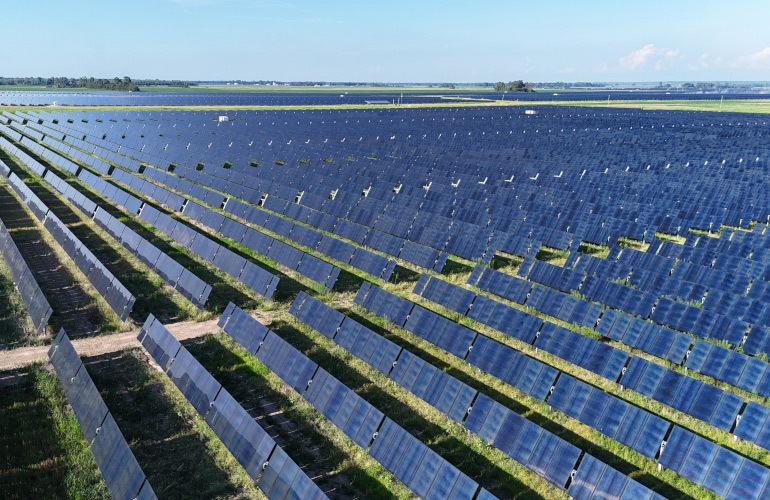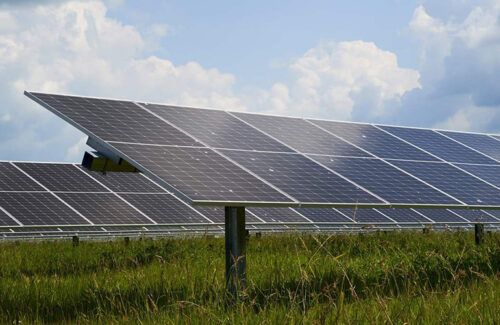

The New Jersey Economic Development Authority (NJEDA) recently approved a new program aimed at reducing greenhouse gas emissions and energy costs. The Retrofit NJ grant program, which focuses on reducing emissions through retrofitting, optimization, fuel switching, and innovative technologies, will support multi-pronged, large-scale retrofit projects that enable comprehensive energy improvements in buildings, campuses, and multi-building facilities, including solar energy plus energy storage. The new funding expands the efforts of the existing NJ Cool program. "New Jersey is leading the nation in building a cleaner and more resilient future," said Governor Phil Murphy. "The RETAIL NJ funding program reinforces our commitment to reducing emissions, lowering energy costs, and driving innovation across our state. By investing in retrofit projects, we are not only protecting our environment, but also creating high-paying jobs and reducing costs for families and businesses.". ” RETAILT NJ will provide grants ranging from $2.5 million to $12.5 million to commercial, industrial, and institutional building owners undertaking renovation projects with a minimum total project cost of $5 million. Eligible projects must include at least three clean energy or electrification components, such as solar energy, energy storage, heating electrification, refrigerant replacement, and energy efficiency upgrades. RETAILT NJ will also provide support for projects implementing Thermal Energy Networks (TENs), an emerging technology that can significantly reduce emissions across multiple buildings. This program is the largest TENs government construction grant program in the country, with each project eligible for up to $12.5 million. It demonstrates New Jersey's strong leadership in advancing cutting-edge technological solutions to address climate change. "New Jersey is committed to addressing climate change through impactful projects aimed at reducing our carbon footprint and promoting a greener state," said Catherine Coviello, Chief Economic Transformation Officer of the New Jersey Economic Development Corporation. "Today's approval of the RETAILT NJ program allows us to expand access to energy efficiency upgrades, strengthen our communities and economy, while helping businesses reduce energy use and save money.". ” Currently, the NJ Cool program provides financial assistance to commercial, industrial, and institutional building owners and tenants who undertake retrofit construction projects for existing buildings in state-designated Overburdened Buildings Communities (OBCs) and adjacent neighborhood census tracts, in order to reduce greenhouse gas emissions during operations. The Retrofit NJ program, which has received unanimous praise, will utilize $75 million in Regional Greenhouse Gas Initiative (RGGI) funding. Of this funding, 50% will be allocated to institutional applicants who are located in Opportunity Business Centers (OBCs) and/or have submitted project appli...

In the United States, the solar tile business has always been an uphill battle – even the “leaders” CertainTeed, GAF Energy, and Tesla might agree. But New York-based SunTegra has carved out a niche in the high-end residential market and has successfully operated over the past decade, navigating through Chinese tariffs, the pandemic, and the expansion of domestic manufacturing for non-traditional solar products. Oliver Koehler, the current CEO of SunTegra, is terminating his passion project, stating that the events of the past year have reached his final limit of patience. Sunshine integrated solar tile “If you don’t have the money to keep the company going, you’re just stagnating. The irony is, unfortunately, that these Chinese companies have the money,” he said. “It’s really a shame. I just want to make better-looking solar panels.” SunTegra began producing silicon-based solar shingles and tiles in 2014. These products are fixed on roof panels in an overlapping manner and feature a patented ventilation design to reduce heat and increase energy production. The SunTegra shingle is a 2x4-foot photovoltaic panel with an injection-molded frame, boasting a peak power of 114 watts. Solar shingles are ideally installed during the construction of new homes or during roof tile replacement, which is why SunTegra has found a customer base that seeks solar shingles with superior aesthetics. Koehler's experience at BP Solar and SunPower has made him a seasoned veteran in the industry, equipped with the advantage of success, but the challenges began immediately. "We have been affected by tariffs since our first batch of containers were loaded onto the ship, which actually dates back to 2014," he said. "At first, we and others had suppliers in China at that time. Then we switched to Suniva solar cells from the United States because there were some brewing tariffs on Chinese-made solar products during the Obama era, which should have allowed us to bypass these tariffs. However, the Department of Commerce changed the rules at the last minute, stating that any panels coming out of China would be taxed, regardless of whether they contained American solar cells. Suddenly, we discovered this change, and we already had containers in transit.". ” Assembling solar tiles in China using American silicon panels quickly proved impractical. Then SunTegra tried assembling in Indonesia, but logistics there were equally challenging. Therefore, Koehler turned to Mexicali, Mexico, to produce custom solar panels for SunTegra. "We purchased some [solar tile] equipment from the soon-to-be-closed Dow Solar and transferred it to Mexico," he said. "I signed the lease contract a week before Trump began attacking the North American Free Trade Agreement, and a year later, new solar tariffs took effect, which also targeted Mexico and Canada." A SunTegra installation The North American Free Trade Agreement (NAFTA) established a free trade area that eliminated tariffs between Canada, Mexico...

Two large-scale battery energy storage systems, each providing 20 megawatts of power and 80 megawatt-hours of energy storage, are now online on the East Coast of Virginia. Funded by Climate First Bank and developed in collaboration with Patterson Enterprises and battery manufacturer Great Power, this investment will enhance the resilience of the power grid and the sustainability of the communities in Exmore and Tasley. The LiFePO4 BESS project supports the Virginia Clean Economy Act's goal of achieving 100% clean energy by 2050, and generates profits through energy arbitrage by storing electricity during periods of abundant supply and releasing it during peak demand periods. "In our years of business activities, we have never been involved in a project more important or exciting than battery energy storage projects," said Harold Patterson, CEO of Patterson Enterprises. "The US power grid now needs energy storage more than ever before, and this demand will only become more severe as industries develop and electricity consumption increases to meet the growing demand. We are passionate about the work we do and proud to collaborate with visionary institutions like Climate First Bank, which shares our commitment to a sustainable energy future.". ” These projects will help prevent power outages and voltage drops during peak usage periods, reduce fluctuations in electricity rates for residents and businesses, and provide voluntary donations totaling $200,000 to local and regional charitable organizations.

Alliant Energy announced the successful grid connection of its first 100-megawatt Battery Energy Storage System (BESS). The BESS is installed in Grant County, adjacent to the company's 200-megawatt solar project. The newly commissioned battery captures and stores excess energy generated by solar and other resources, and then releases it back into the grid when needed. "Energy storage systems like these complement our existing generation resources and are an important step towards creating a smarter, more resilient grid," said David de Leon, president of Alliant Energy Wisconsin Energy Company. "The combination of BESS and solar energy is a crucial component of our balanced energy portfolio. Together, they offer tremendous potential, adding value and flexibility while ensuring reliable and cost-effective energy for our customers." This BESS system can supply power to over 100,000 households for up to four hours after a single charge. Energy storage infrastructure is a relatively new component of Alliant Energy's strategy and a crucial aspect of bolstering its renewable energy investments. Battery storage enables Alliant Energy to meet demand, reduce the need for traditional grid updates, and ensure preparedness in the event of power outages and severe weather conditions.

The 177-megawatt Richley Solar Project in Lackawanna County, Tennessee, is now operational for the Tennessee Valley Authority (TVA). Located approximately 100 miles north of Memphis, the project was designed by LRE. Ridgely Solar began its development in 2020 and created approximately 700 jobs during the construction process. LRE's engineering team collaborated with Nextracker and First Solar, and continues to maintain long-term partnerships with these two leading American companies. Nextracker's NX Horizon-XTR terrain-following solar tracking system, as well as First Solar's thin-film solar modules, provide industry-leading performance and reliability. "Ridgely Solar is a significant milestone for LRE's first project in Tennessee," said Eran Mahrer, Chief Commercial Officer of LRE. "This project provides reliable energy, drives investment in Lake County, and demonstrates our role as a community partner by supporting local priorities. Furthermore, by establishing long-term relationships with American technology leaders, prioritizing domestic employment and manufacturing, and integrating innovative solutions that reduce impact and accelerate deployment, Ridgely showcases a forward-thinking project that strengthens the communities where we operate and contributes to our country's long-term energy security.". ” In addition to providing reliable and affordable energy, Ridgely Solar has become a partner of the Lake County community, supporting initiatives that enhance education, safety, and family well-being. Through the Tennessee College of Applied Technology (TCAT) Northwest, the project has funded scholarships, helped build an inclusive playground for children with disabilities, and supported local flood relief efforts in the Red Cross's South Central region. Ridgely Solar has also provided public safety infrastructure for first responders and resources to The Nest, a daycare center at Margaret Newton Elementary School that provides free childcare services to local families. "Projects like Ridgely Solar have had a lasting impact on our community," said Lake County Mayor Danny Cook. "This project expands opportunities, supports the long-term growth of Lake County, and provides reliable energy to the region."

CleanCapital announced the official commencement of commercial operations for its latest solar project in downtown Buffalo, New York. With an installed capacity of 3.59 megawatts, the project is located on Elk Street, demonstrating CleanCapital's expertise in brownfield development and the company's ongoing commitment to distributed energy generation and the revitalization of underutilized land. The solar project is located north of the Buffalo River, covering 11 acres, and was originally part of an ExxonMobil oil depot. The project will transform a covered and lined brownfield adjacent to a wastewater treatment plant into a productive energy asset for the city of Buffalo. Through the National Grid's "Everyone Solar" (E-SFA) initiative, it will provide affordable solar power to local residents, including low- and middle-income households. The Elk Street Solar Project is part of CleanCapital's Western Electric Field (WEF) portfolio, alongside two other projects in New York—the West Shore Project in West Park and the Fork in the Road Project in Milan. These three projects provide renewable energy to National Grid customers, enhance grid reliability, stabilize energy prices, and expand community solar coverage in New York State. CleanCapital's Chief Development Officer, Paul Curran, stated: "CleanCapital is delighted that the Elk Street Solar Project has commenced operations and will continue to invest in distributed generation and brownfield development. This project exemplifies how solar energy can positively impact local communities, support grid resilience, and deliver tangible benefits to residents of Buffalo."

On October 17, the Illinois Commerce Commission (ICC) approved a key update to the Illinois Power Agency's Long-Term Renewable Resource Procurement Plan (LTRRPP) for 2024-2026, aimed at expanding solar capacity and protecting Illinois consumers from rising energy costs. The International Chamber of Commerce (ICC) ruling authorizes an immediate doubling of the Adjustable Block Program (ADB)—expanding the community, commercial, and small-scale solar categories—while advancing new utility-scale competitive procurements before the gradual phase-out of the Federal Investment Tax Credit (ITC). This decision enables developers to connect hundreds of megawatts of additional affordable clean energy to the grid, while ensuring lower taxpayer costs through the efficient utilization of existing funds. "This decision represents a major victory for the future of clean energy in Illinois," said Andrew Linhares, Senior Manager for the Midwest at SEIA. "By expanding solar generation capacity, the commission is helping ensure Illinois residents benefit from lower costs, greater reliability, and well-paying local jobs. This is the forward-thinking action we need to keep Illinois at the forefront of the national renewable energy landscape." Illinois' approach stands out nationwide. While many states have slowed procurement due to uncertainty in federal policies, Governor Pritzker's administration and the Illinois Commerce Commission (ICC) swiftly acted to accelerate renewable energy investments. These efforts aim to create local jobs, stabilize electricity prices, and enhance grid reliability. The expanded generation capacity will also prioritize projects capable of starting construction before the Investment Tax Credit (ITC) expires, ensuring Illinois consumers and workers receive the greatest economic benefits.

Commercial rooftop solar projects primarily utilize metal mounting systems, whether anchored with on-site concrete ballast or mechanically fastened to the roof. However, alternative materials have also been proven suitable as primary mounting structures for flat roof applications. Some manufacturers have shifted from extruded metals to specialized molded plastics, even incorporating concrete traditionally used as ballast into the shelving itself. Sun Ballast introduced its proprietary concrete anchoring technology to the United States in the fall of 2023. Founded in 2011 by Italian solar contractor Maurizio Iannuzzi, the company aimed to seek simpler solutions for Italy's complex flat roof market. Edoardo Brignoli, CEO of Sun Ballast USA, stated, "He came up with the idea of integrating ballast and brackets into a single component and began producing them in-house to facilitate installation and improve efficiency. He manufactures the brackets in the morning and installs them in the afternoon." The Sun Ballast product is a three-piece system: it features three orientations (embedded, east-west, and southward tilt of 5 to 10°), three components (concrete ballast frame, laid rubber mat, and clamping fixture for installation modules), and three weight options (32, 64, and 96 pounds). The difference between Sun Ballast and ready-mix concrete lies in its curing method. This concrete has a strength of 5,000 psi, which is the standard strength for load-bearing construction projects. "People have come to realize from painful experiences that not all concrete is created equal," Brinoli said. "We often encounter situations where installers or EPC contractors don't access the roof until ten years after the initial installation, essentially just scooping up sand that was once in blocks but has broken apart over the years due to freeze-thaw cycles.". ” The company designated the Northeast region as a test site for Sun Ballast to demonstrate its ability to withstand the winter conditions of the area. "We thought, 'If we can handle New England, we can handle the rest of the country,'" he said. Sun Ballast is cast domestically. Since concrete is non-conductive, it is awaiting UL 3741 compliance approval—which will allow contractors to meet fire safety requirements without installing rapid shutdown devices on the roof. Plastic, polymer, and fiberglass shelves DynoRaxx first entered the solar mounting market in 2007 when the company introduced a steel mounting structure, but its representatives found the assembly process cumbersome. In 2011, the company launched a mounting system made from proprietary molded fiberglass composite. The DynoGrip Evolution flat roof system is a ballasted mount that can be installed without any tools. The fiberglass material means the rack is not affected by thermal expansion like metal racks. DynoGrip is installed in areas exposed to direct sunlight, featuring UV resistance and fireproof properties, meeting UL 2703 standards. The rack ...

EDP Renewables North America (EDPR NA) has completed the 180-megawatt Azalea Springs Solar Project in Angelina County, Texas. The Azalea Springs Solar Project will generate enough electricity annually to power over 27,800 average Texas households. "The Azalea Springs Solar project demonstrates the powerful role that energy infrastructure can play in building stronger, more resilient communities," said Sandhya Ganapathy, CEO of EDPR NA. "This project serves as a model for clean energy applications—it not only provides reliable residential power to the Texas grid but also drives economic growth in Angelina County and the broader region. We are deeply proud that the Azalea Springs Solar project will generate long-term revenue for essential public services, foster local economic development, and deliver lasting benefits to Texas.". ” The Azalea Springs Solar Project has contributed over $75 million to the local and statewide economy, including $35 million in revenue for local governments to support schools, roads, and essential community services, with the remaining funds allocated for regional expenditures. The construction of the Azalea Springs Solar Project created 250 construction jobs for the local area. Additionally, EDPR NA has made donations to the Central Independent School District. "The collaboration with EDP, the Azalea Springs Solar Project, and Central ISD holds extraordinary significance for our school district," said Justin Risner, Director of Central ISD. "EDP is eager to serve students and meet their needs, far exceeding our expectations. Their team has repeatedly reached out to us and provided resources to help our students and district improve. The impact of EDP Renewables on Central ISD will be profound, benefiting not only our district but also our entire board. Central ISD deeply appreciates EDP's support and generosity and looks forward to establishing a long-term partnership between both parties.". ” With the commissioning of the Azalea Springs Solar Project, EDPR NA operates six utility-scale energy projects across the state, with a total installed capacity exceeding 1.6 gigawatts. In addition to the Azalea Springs Solar Project, these six utility-scale projects include the 386-megawatt Lone Star Wind Farm, the 300-megawatt Los Mirasoles Wind Farm, the 209-megawatt Reloj Del Sol Wind Farm, the 175-megawatt Wildcat Creek Wind Farm, and the 390-megawatt Cattlemen Solar Park.
Categories
New Products
Tin Roof Rapid Solar Mounting System with Hanger Bolt Read More
Residential Small Solar Easy Bracket Kit for Home Balcony Read More
Automatic Single Pile Solar Tracker with 10 PV Panels Read More
Angle Adjustable Aluminum Easy Solar Panel Bracket for Garden Read More
Intelligent Single Post Dual Row Solar Tracking System Read More
5000ES Solar Off-Grid Energy Storage Inverter Supplier Read More
Multi Drive Double-Sided Single Axis Tracker System Read More
© Copyright: 2025 Xiamen Wintop New Energy Tech Co., Ltd.. All Rights Reserved.

IPv6 network supported
Friendly Links:
Integrated Solar System